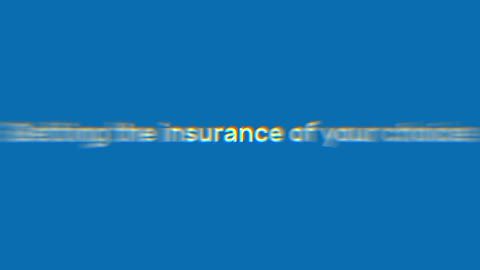Types of ULIPs
ULIPs are flexible you can choose how your money is invested depending on your goals and comfort with risk. Let us look at the three main options:
1. Equity funds
These invest mostly in stocks. They come with higher risk but also the chance of higher returns. If you’re young and have time to ride out market ups and downs, this could be a good choice.
Best for: Long-term goals like retirement or your child’s education.
Example: If you are in your early 30s and saving for the next 15–20 years, equity ULIPs can help you grow your wealth significantly.
2. Debt funds
These are safer. They invest in government bonds and corporate debt, which means your money isn’t exposed to the ups and downs of the stock market as much.
Best for: People who want steady returns and are not keen on taking risks.
Example: Planning a holiday or home renovation in five years? Debt ULIPs can give you more stability.
3. Balanced funds
These offer a middle path. Your money is split between equity and debt investments. You get moderate growth with less risk than full equity.
Best for: Those who want some growth but aren’t entirely comfortable with high market risk.
Example: In your 40s and planning for retirement in 10–15 years? Balanced ULIPs can offer both safety and growth.
Advantages of ULIPs
ULIPs come with several useful benefits. Here’s what makes them stand out:
- Insurance plus investment – You get life cover and also grow your money in the market.
- Tax benefits – Enjoy deductions under Section 80C and tax-free maturity under Section 10(10D).
- Flexibility – Choose between equity, debt, or balanced funds to match your financial goals.
- Fund switching – Move your money between funds if the market changes or your goals shift.
- Partial withdrawals – After five years, withdraw part of your money if you need it.
- Long-term wealth creation – ULIPs are ideal for growing your savings over many years.
- Transparency – You get clear information on charges, fund value, and performance.
Running low on cash but do not want to give up your ULIP? You can borrow against your policy with a loan against insurance. It's quick and does not disturb your financial goals. Apply now
Disadvantages of ULIPs
While ULIPs have many positives, there are a few things to be careful about:
- High charges – In the first few years, charges can eat into your returns.
- Market risk – Your returns depend on how the market performs, so nothing is guaranteed.
- Lock-in period – You can’t touch your money for five years.
- Lower returns vs mutual funds – Because of charges, your net returns may be lower than direct mutual fund investments.
- Can be complex – ULIPs have many features and charges that can be hard to understand for beginners.
- Switching limits – You can switch between funds, but too many switches might cost extra.
How ULIPs work?
A ULIP (Unit Linked Insurance Plan) combines life insurance with market-linked investment. When you pay a premium, a portion goes towards providing life cover and the remaining amount is invested in funds of your choice – equity, debt, or a mix. Over time, the value of your ULIP grows based on market performance, giving you protection and wealth creation in a single product. Here is a simple breakdown of how ULIPs function:
Premium allocation: Your premium is divided into two parts one for life insurance cover and the other for investment in chosen funds.
Fund selection: You can choose between equity, debt, or balanced funds depending on your risk appetite.
Unit creation: The investment portion of your premium is used to purchase units in the selected fund at the prevailing NAV (Net Asset Value).
NAV-based growth: Your ULIP’s value rises or falls according to market movements and fund performance.
Fund switching: You can switch between funds to manage risk or capture market opportunities.
Life cover protection: A guaranteed death benefit remains active throughout the policy term, ensuring financial security for your family.
Charges and deductions: ULIPs involve charges such as premium allocation, fund management, and mortality charges, deducted periodically from your policy value.
Maturity benefit: At the end of the policy term, you receive the fund value as a lump sum, depending on NAV and units accumulated.
Is a ULIP good for long-term investments?
Yes, if you are in it for the long haul. ULIPs are designed for people who want to build wealth over time while staying insured. You also benefit from tax savings and flexibility in choosing how your money is invested. To check how your investment might grow, use a ULIP calculator and factor in your age, risk appetite, and investment period.
How to choose a ULIP: Fund type, tenure, charges and riders
Choosing the right ULIP requires balancing long-term financial goals, risk appetite, and the overall value you expect from the policy. Since ULIPs offer both protection and market-linked growth, understanding these key components helps you make a more informed and confident decision. Here is a simple guide to what you should evaluate:
Fund type
Your fund choice determines how your money grows over time.
Equity funds: Higher risk, higher growth potential; ideal if you want long-term wealth creation and can handle market volatility.
Debt funds: Lower risk and more stability; suitable for conservative investors who prefer predictable returns.
Balanced funds: Moderate risk by investing in both equity and debt; good for investors seeking a balance of growth and stability.
Flexibility to switch: ULIPs allow you to move between funds based on markets or changing goals.
Tenure
ULIPs work best when you think long term.
Minimum lock-in of 5 years: This ensures disciplined investing and protects your policy from early withdrawals.
Ideal for long-term goals: Wealth creation, children’s education, or retirement planning.
Consider your liquidity needs: If you anticipate short-term cash requirements, ensure the policy tenure aligns with your horizon.
Charges
Understanding ULIP charges helps you estimate the real value of the policy.
Premium allocation charges: Deducted before your money is invested.
Fund management charges: Applied to manage your investment portfolio.
Mortality charges: Cost of providing life insurance cover.
Policy administration charges: Levied for maintaining the policy.
Overall impact: Compare the charge structure across insurers to ensure long-term cost efficiency.
Riders
Riders offer added protection and customisation.
Accidental death benefit: Provides an additional payout in case of accidental death.
Waiver of premium: Future premiums are waived if you face disability or loss of income.
Critical illness rider: Offers a lump-sum benefit upon diagnosis of listed illnesses.
Choose only as needed: Riders should match your lifestyle, risks, and financial goals.
Considerations before investing in ULIPs
Before you invest, it’s wise to check a few things:
Your investment horizon – ULIPs work best when you invest for 10 years or more.
Your comfort with risk – Since returns depend on market conditions, you should be okay with some ups and downs.
Charges – ULIPs have multiple charges. Read the fine print and understand how these affect your returns.
Compare options – If you are focused only on returns and not on insurance, mutual funds may give you better value. But if you want both, a ULIP can be a smart combo.
Got an existing ULIP and need funds? Do not surrender it. Apply for a loan against insurance policy instead and keep your long-term investment on track.
Conclusion
ULIPs are a flexible tool that gives you the best of both worlds insurance and investment. They offer tax savings, investment choice, and a disciplined approach to long-term wealth building. However, they also come with charges, market risks, and a five-year lock-in period. That’s why it’s important to see if they fit your goals and comfort with risk. And if you already own a ULIP and need quick money, you can always explore a loan against your insurance policy to manage short-term needs without disturbing your financial plan.
Use your ULIP not just for the future, but for today’s emergencies too, with a loan against insurance policy. Get started






